What is Energy Crisis?
Energy crisis is the concern that the world’s demands on the limited natural resources that are used to power industrial society are diminishing as the demand rises. These natural resources are in limited supply. While they do occur naturally, it can take hundreds of thousands of years to replenish the stores. Moreover, the unchecked use of the fossil fuels is accumulating dangerous levels of greenhouse gases in the atmosphere and thereby is causing global warming. Governments and concerned individuals are working to make the use of renewable resources a priority, and to lessen the irresponsible use of natural supplies through increased conservation.
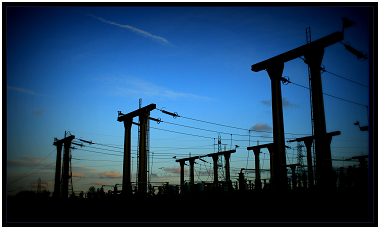
The energy crisis is a broad and complex topic. Most people don’t feel connected to its reality unless the price of fuel at the filling station goes up or there are lines at the gas station. The energy crisis is something that is ongoing and getting worse, despite many efforts. The reason for this is that there is not a broad understanding of the complex causes and solutions for the energy crisis that will allow for an effort to happen that will resolve it.
Causes of the Energy Crisis
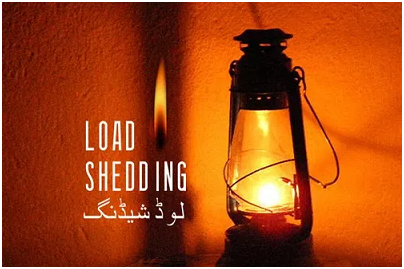
It would be easy to point a finger at one practice or industry and lay the blame for the entire energy crisis at their door, but that would be a very naive and unrealistic interpretation of the cause of the crisis.
1. Over-consumption: The energy crisis is a result of many different strains on our natural resources, not just one. There is a strain on fossil fuels such as oil, gas and coal due to over-consumption – which then in turn can put a strain on our water and oxygen resources by causing pollution.
2. Overpopulation: Another cause of the crisis has been the high rate of population and its demands for fuel and products. No matter what type of food or products you choose to use – from fair trade and organic to those made from petroleum products in a sweatshop – not one of them is made or transported without a significant drain on our energy resources.
3. Poor Infrastructure: Aging infrastructure of power generating equipment is yet another reason for energy shortage. Most of the energy producing firms keep on using outdated equipment that restricts the production of energy. It is the responsibility of utilities to keep on upgrading the infrastructure and set a high standard of performance.
4. Unexplored Renewable Energy Options: Renewable energy still remains unused in most of the countries, especially Pakistan. Most of the energy comes from non-renewable sources like coal, oil and gas. It still remains the top choice to produce energy. Unless we give renewable energy a serious thought, the problem of energy crisis cannot be permanently solved. Renewable energy sources can reduce our dependence on fossil fuels and also could help to reduce greenhouse gas emissions.
5. Delay in Commissioning of Power Plants: Especially in Pakistan, there is a significant delay in commissioning of new power plants that can fill the gap between demand and supply of energy. The result is that old plants come under huge stress to meet the daily demand for power. When supply doesn’t matches demand, it results in load shedding and breakdown.
6. Wastage of Energy: One of the most critical aspect of energy crisis is that people do not realize the importance of conserving energy. It is only limited to books, internet, newspaper ads, lip service and seminars. Unless we give it a serious thought, things are not going to change anytime sooner. Simple things like switching off fans and lights when not in use, using maximum daylight, walking instead of driving for short distances, using Light Emitting Diode (LED) and Compact Fluorescent Lights (CFL) instead of traditional bulbs and proper insulation for leakage of energy can go a long way in saving energy.
7. Poor Distribution System: Frequent tripping and breakdown are result of a poor distribution system.
8. Major Accidents and Natural Calamities: Major accidents like pipeline burst and natural calamities like eruption of volcanoes, floods, earthquakes can also cause interruptions to energy supplies. The huge gap between supply and demand of energy can raise the price of essential items which can give rise to inflation.
9. Wars and Attacks: Wars between countries can also hamper supply of energy specially if it happens in Middle East countries like Saudi Arabia, Iraq, Iran, Kuwait, UAE or Qatar. That’s what happened during 1990 Gulf war when price of oil reached its peak causing global shortages and created major problem for energy consumers.
10. Miscellaneous Factors: Tax hikes, strikes, political events, severe hot summers or cold winters can cause sudden increase in demand of energy and can choke supply. A strike by unions in an oil producing firm can definitely cause an energy crisis.
The Scope of Renewable Energy in Pakistan
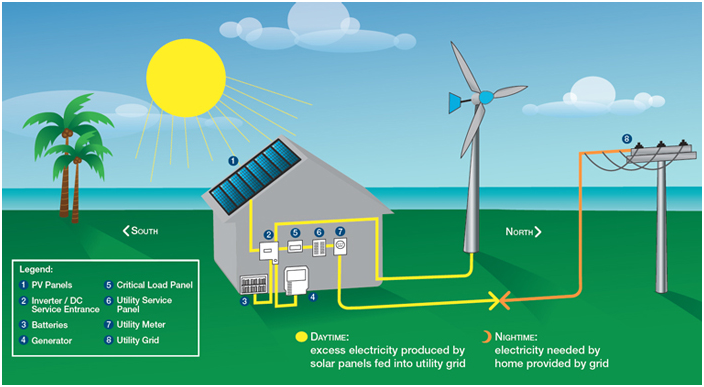
Over the last thirty years, Asia has become a major player on the global scene. Many economies have become tigers while China is developing more rapidly than anyone had expected. Because of these developments, electricity demand is expected to increase 8-10% every year until 2030. As the world wakes up to the reality of climate change, electricity will increasingly have to come from renewable sources such as wind and solar. Our beloved homeland Pakistan is in a good position to exploit these because it has abundant wind and sun. Here we have emphasised this potential, the barriers that exist to further development and the reasons why we must follow the course to a greener energy future.
Origins of Wind Power
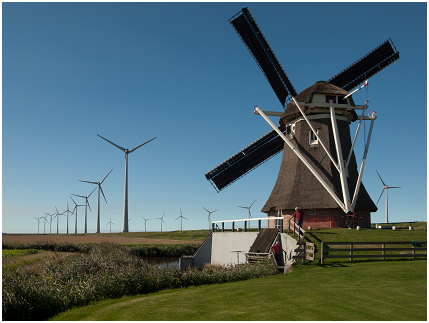
Many people do not realize that wind energy first came about in Asia. Between 500 and 900 AD, a vertical axis turbine was developed in Persia to grind grain and pump water. These wind turbines were made from bundles of reeds or wood. During the 11th century, the Europeans brought the concept of the windmill to Europe where it was first used by the Dutch to grind corn and to drain wetlands in order for people to settle and build homes. In recent years, Europe and North America have led in terms of installed wind capacity.
Asia is now -again- making its presence felt. India and China currently have the fourth and fifth largest number of wind turbines installed, respectively.
It is interesting to note however, that while India has 45,000 megawatts (MW) of wind energy potential and a much larger surface area, Pakistan has much greater, at least 50,000 MW of potential.
The Viability of Wind Power in Pakistan
Our beloved homeland Pakistan is fortunate to have something many other countries do not, which are high wind speeds near major centres. Near Islamabad, the wind speed is anywhere from 6.2 to 7.4 metres per second (between 13.8 and 16.5 miles per hour). Near Karachi, the range is between 6.2 and 6.9 (between 13.8 and 15.4 miles per hour). Pakistan is also fortunate that in neighbouring India, the company Suzlon manufactures wind turbines, thus decreasing transportation costs. Its turbines start to turn at a speed of 3 metres per second. Vestas, which is one of the world’s largest wind turbine manufacturers, has wind turbines that start turning at a speed of 4 metres per second. In addition to Karachi and Islamabad, Sindh and coastal areas of Balochistan are other venues in Pakistan that receive a significant amount of wind.
In only the Balochistan and Sindh provinces, sufficient wind exists to power every coastal village in the country. There also exists a corridor between Gharo and Keti Bandar that alone could produce between 40,000 and 50,000 megawatts of electricity.
Given this surplus potential, Pakistan has much to offer Asia with regards to wind energy. In recent years, the government has completed several projects to demonstrate that wind energy is viable in the country. In Mirpur Sakro, 85 micro turbines have been installed to power 356 homes. In Kund Malir, 40 turbines have been installed, which power 111 homes. The Alternative Energy Development Board (AEDB) has also acquired 18,000 acres for the installation of more wind turbines. However, such steps are just the small beginnings when compared to the huge potential of power generation in the country.
In addition to high wind speeds near major centres as well as the Gharo and Keti Bandar corridor, Pakistan is also very fortunate to have many rivers and lakes. Wind turbines that are situated in or near water enjoy an uninterrupted flow of wind, which virtually guarantees that power will be available all the time. Within towns and cities, wind speeds can often change quickly due to the presence of buildings and other structures, which can damage wind turbines. In addition, many people do not wish for turbines to be sited near cities because of noise, though these problems are often exaggerated. Wind turbines make less noise than an office and people comfortably carry on conversations while standing near them.
Solar Energy – a Feasible Alternative
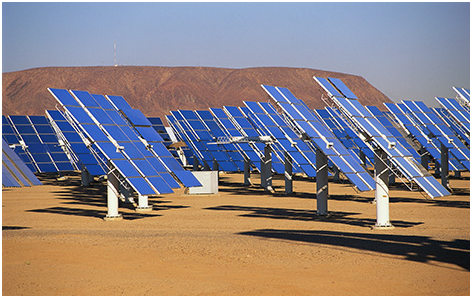
As is becoming painfully evident with summer around the corner, Pakistan is an exceptionally sunny country. If 0.25% of Balochistan was covered with solar panels with an efficiency of 20%, enough electricity would be generated to cover all of Pakistani demand.
Solar energy makes much sense for Pakistan for several reasons: firstly, 70% of the population lives in 50,000 villages that are very far away from the national grid, according to a report by the Solar Energy Research Centre (SERC). Connecting these villages to the national grid would be very costly, thus giving each house a solar panel would be cost efficient and would empower people both economically and socially.
In many Pakistani villages, wood and animal dung is used for cooking fuel; however, this is causing widespread deforestation. Women are also forced to walk for many miles each day to gather wood. Then, their health suffers from the smoke emitted from cooking on wood fires. It is a productive idea to give solar cookers to the villagers who receive solar panels. In one of such projects, deforestation decreased by 80% near the villages and the cookers were also made in Pakistan, which generated local economic growth.
Coal Power and Hydroelectricity
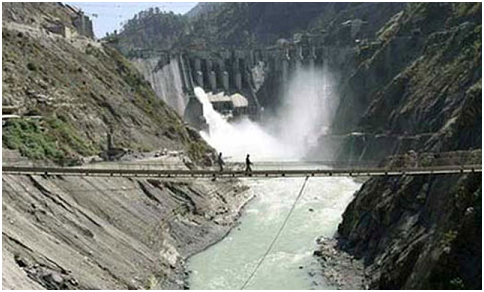
In addition to wind and solar, our beloved homeland Pakistan has the fifth largest coal deposits in the world. However, the negative impacts of coal have been well documented. When power is produced from coal, sulfur dioxide and nitrous oxides are produced as well, which cause an increase in smog, ozone depletion and acid rain. Nitrous oxide is also a very powerful greenhouse gas. Even before the power is produced, the transportation of coal also impacts health due to the coal dust and the emissions from the vehicles. Lastly, the heavy metals from coal mine waste can seep into groundwater and rivers, of which there are many in use Pakistan.
Because of the presence of many rivers and lakes, it may be tempting to go down the route of large hydroelectric dams, but this may not be the answer for Pakistan. There are many examples of hydroelectric projects in India and China that show the detriments of hydroelectricity. In China, one million people are being relocated as part of the Three Gorges Dam project and 62,000 acres of farmland will be flooded. The reservoir for the dam will contain one billion tons of sewage, states Diana Biggs in her case study on the Three Gorges Dam.
Financial and Policy Incentives
Despite the fact that Pakistan is so well endowed with wind and solar potential, only a few projects such as those mentioned above have been completed. One of the reasons why this has occurred is that Pakistan does not have major financial incentives available for those who want to install wind turbines or solar panels. Let us look at the case of other developing countries which preferably provide such incentives. Despite having less potential for wind, India now has the world’s fourth largest number of wind turbines installed at 7,093 MW, according to India: Renewable Energy Market report. In front of India are Germany at 21,283 MW, Spain at 13,400 MW and the US at 12,934 MW. In Germany, Spain and India, those who install wind turbines and solar panels are guaranteed a certain rate per kilowatt hour. In India, this varies according to the technology and the area. The Ministry of New and Renewable Energy, India reports that in most areas, between 2500 and 4800 rupees are guaranteed for solar panels, and for wind turbines, between 250,000 and 300,000 rupees are awarded.
Because of the above incentives, the cost of wind in India is between 2 and 2.5 cents per kilowatt hour while in Pakistan, the cost is 7 cents. In December 2006, the Pakistani government announced a national renewable energy policy. This policy means that small projects do not need approval and that any person can put up their own project. However, there are no financial incentives for doing so. At the moment, all renewable energy equipment has no sales or income tax and is free of custom duty, but these incentives do very little to stimulate growth in the renewable energy market where RoIs and other financial ratios have a long gestation or break-even period.
